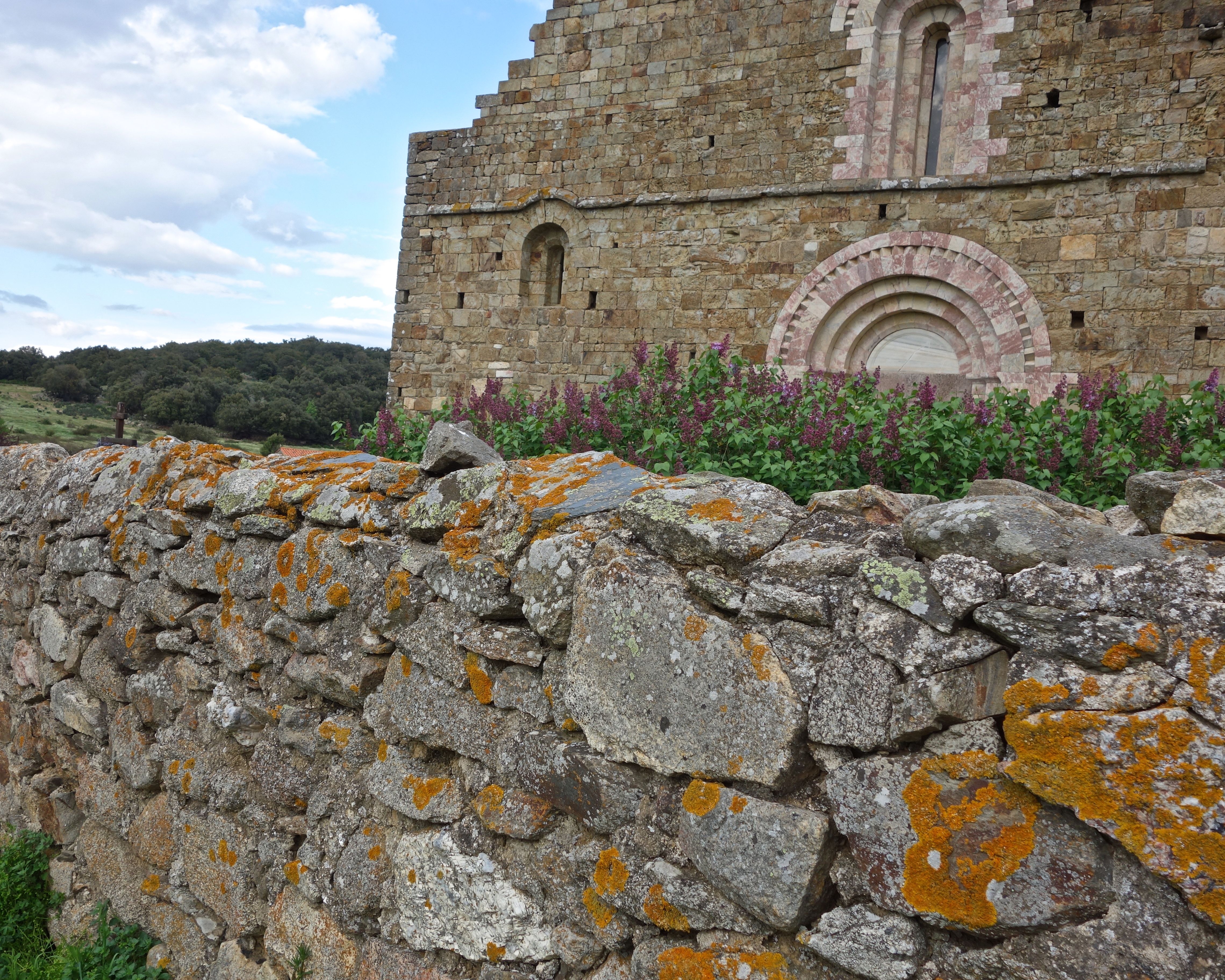For a recent sojourn in the Pyrénées-Orientales, I asked Dennis Aubrey to recommend some Romanesque churches and monasteries to visit. Marcevol was on his list. Thanks Dennis.
On our way to spend a weekend in the higher Pyrenees, a friend and I visited the Prieuré de Marcevol which had unfortunately closed two minutes before we arrived. But the sun sets late on these spring nights and I was able to take some photos of the exterior. It’s a twelfth-century priory founded by the Order of Saint Sépulcre, destroyed in an earthquake in 1428, abandoned as ruins during the French Revolution and only properly restored in the last 40 years. The priory now welcomes groups for cultural and sporting activities.

The facade is impressive, but the eye returns again and again to the rosy marble framing of the door and window. The marble comes from the nearby quarries in Villefranche-de-Conflent, and has been used in many churches in the region.

Uphill from the priory, there’s the small hamlet of Marcevol and a small eleventh-century church, Nostra Senyora de las Gradas (Santa Maria de las Grades).

We drove up the hill to see if we could go inside but unfortunately we were out of luck again; it is not open to the public. It’s right next door to, practically adjoining, a house which we thought was part of the church structure. The owner, sitting on the steps by his back door, set us right.

The chevet of the church is decorated by Lombard Bands, or a series of blind arcades, which are believed to also enhance stability. Blocks of stone, much longer and wider than the others in the structure, were set deep into the thick walls above and below the arcades. Lombard Bands were widely used on Romanesque churches in the Catalonia region of southern France and northern Spain, where Marcevol is located.
Since the little church and houses are all of stone, there’s nothing ugly in this hamlet. For even when stone structures are neglected and tumble down, wildflowers grow quite naturally in the gaps. On the web site for the Marcevol priory, I read: ‘Anyone who has never been to Marcevol does not know everything about the world’s beauty.’ It’s not just the priory, the hamlet and church that inspire, but also the setting, close to the majestic Mount Canigou (2785 m), the mountain loved by the Catalans.

*****

